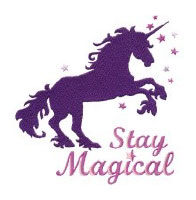When you think about children learning, you probably imagine them figuring out their ABCs or solving simple arithmetic problems. But for infants and toddlers, play is one of the most crucial steps in learning. In fact, childhood psychologists have found that there are stages of play that children engage in as they develop and grow. Read on to find out about the power of constructive play in toddlers in Phoenix, AZ, and how you can encourage your child to engage in it.
Early play stages
This first stage is referred to as functional play. This is when children repeatedly move objects or explore toys via their senses. Think of a young child placing blocks into a box (and perhaps immediately emptying it afterwards), or putting a rubber toy in their mouth.
The next stage is constructive play. This is when toddlers have a better understanding of what objects do. Now they will try to build things with these objects. A good example of this is when a child stacks blocks on top of each other or builds a fort on their bed.
Attention span and constructive play
At about two years old, a child’s attention span begins to lengthen, and they can spend longer stretches sitting and focusing on a particular toy or activity. This is when a child moves from less directed play, like chewing on a toy, to play that seems more purposeful, like creating an arrangement of objects.
How to encourage constructive play
It’s important for children to be given the space and time to engage in constructive play as they see fit. Some parents may want to correct how their child plays. For example, you might want to put a series of numbered blocks in order, but it’s better to provide your child with items made for constructive play and let them use them however they want.
Give your child Play-Doh along with a few sculpting tools. Another great constructive play toy is a sand table with a few plastic shovels and buckets. Anything art related—from finger painting to crayons—is also great for constructive play. Let their imagination run wild with open-ended materials and constructive play will follow.
Why constructive play is beneficial
As you may notice, your toddler is beginning to process and understand the world around them. Constructive play helps them process this information. Putting items together to represent something else—such as building a sand castle—is the first step in active thinking. And constructive play will lead to the next stage of development: dramatic play.
We hope this post helps further your understanding of an important facet of toddler development in Phoenix, AZ. If you’re looking for supportive childcare, then turn to the friendly team at Magical Star Preschool. We are a family-oriented childcare center with a loving staff and teachers. Our team of educators helps all young children thrive. Contact us today to learn more about our programs and see whether we’d be a good fit for you and your child!

